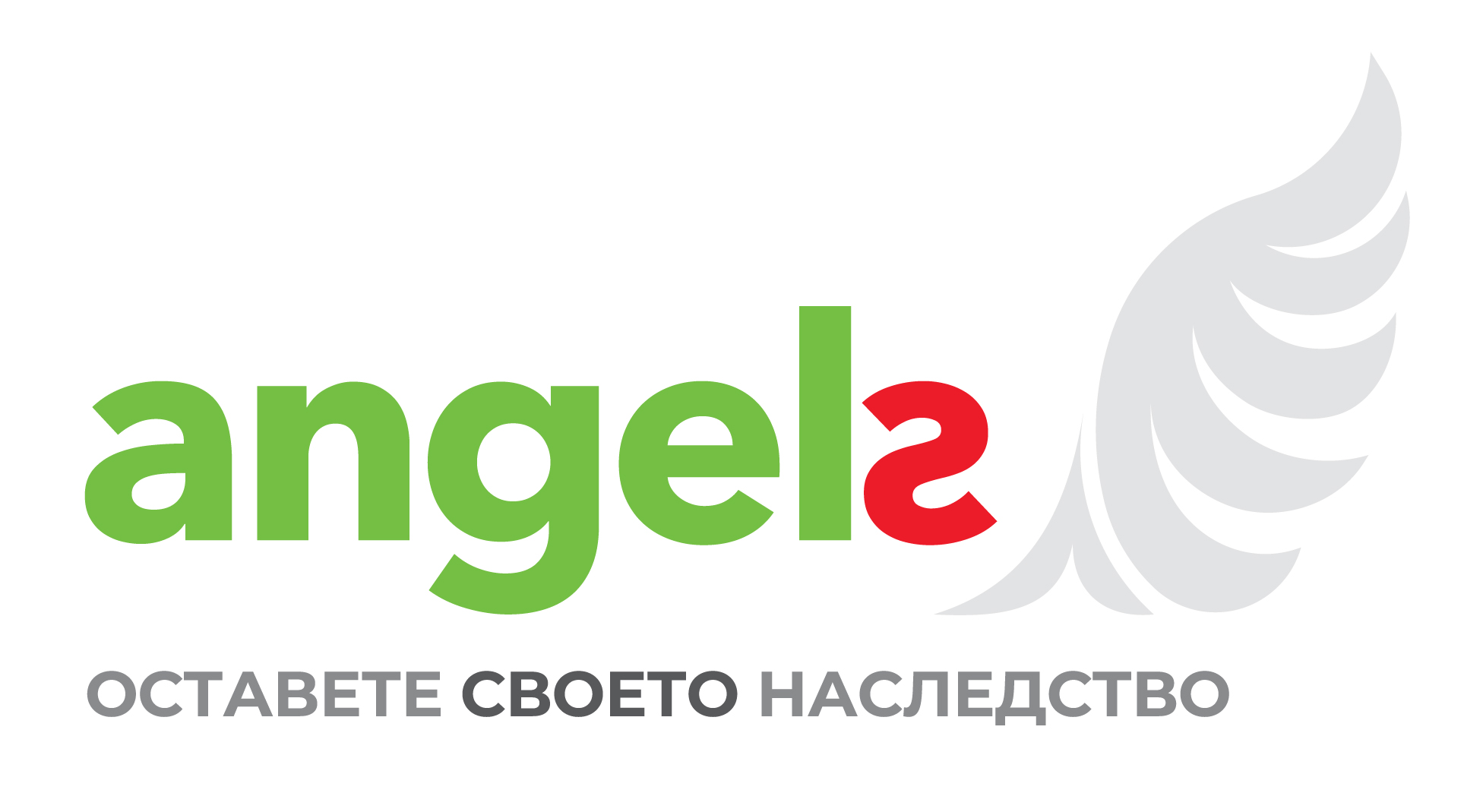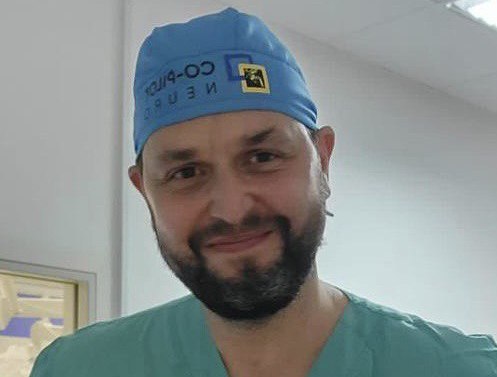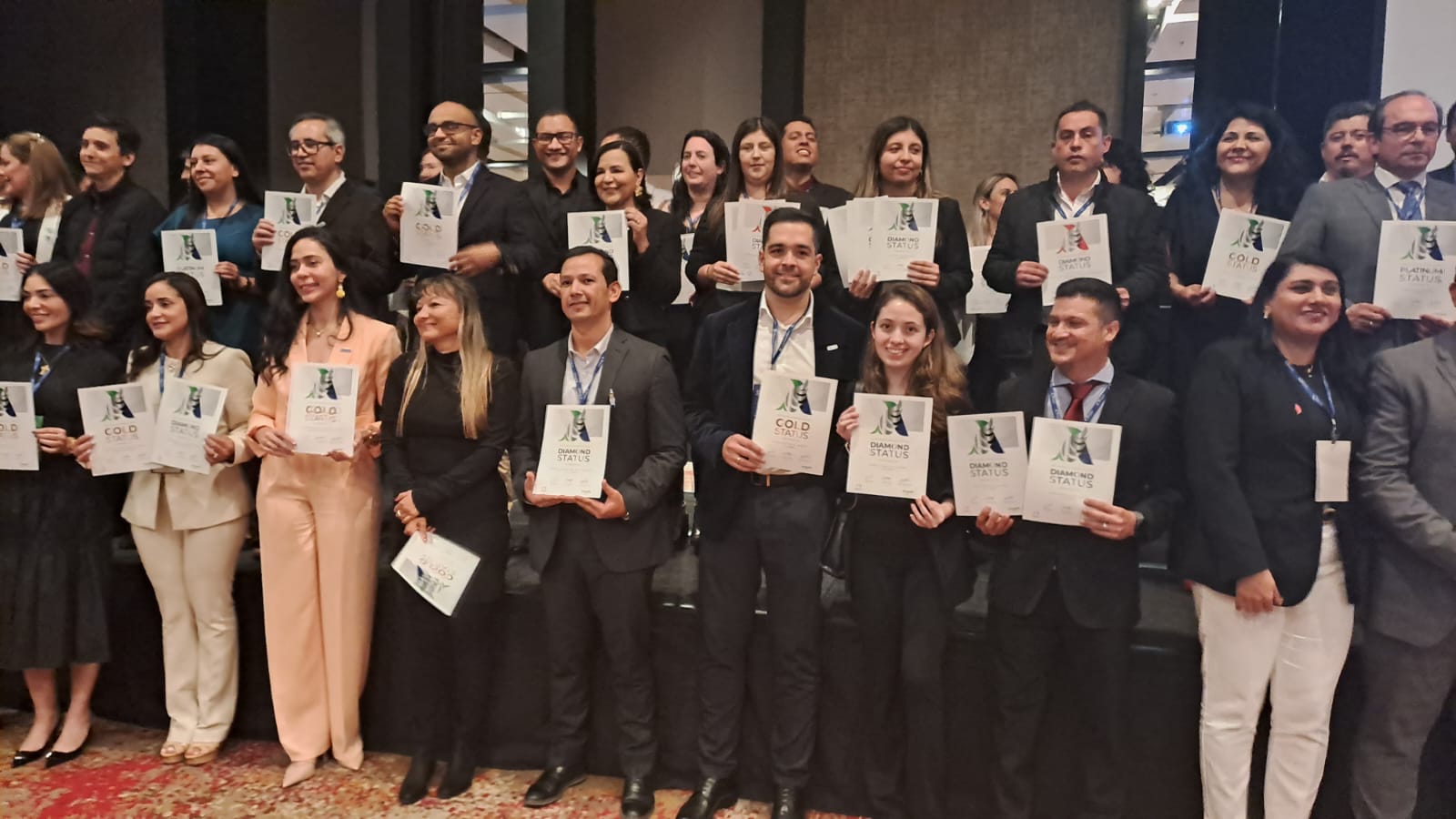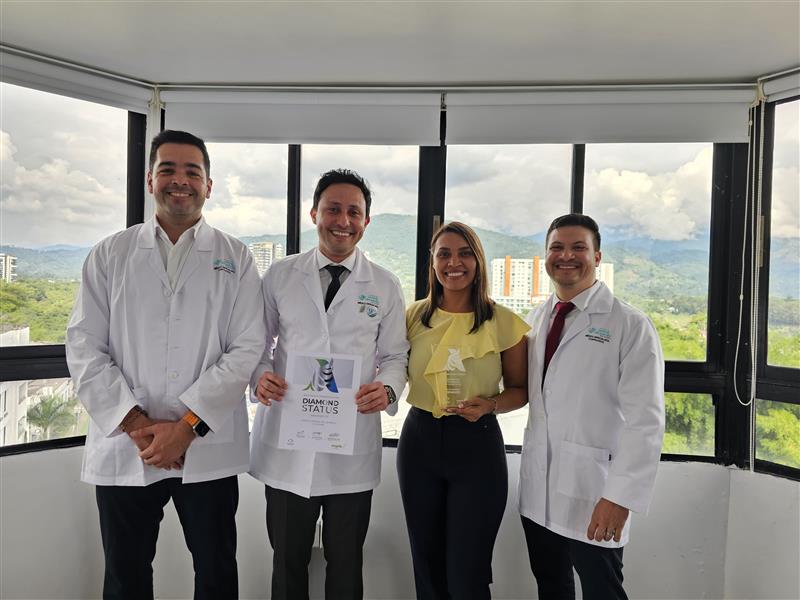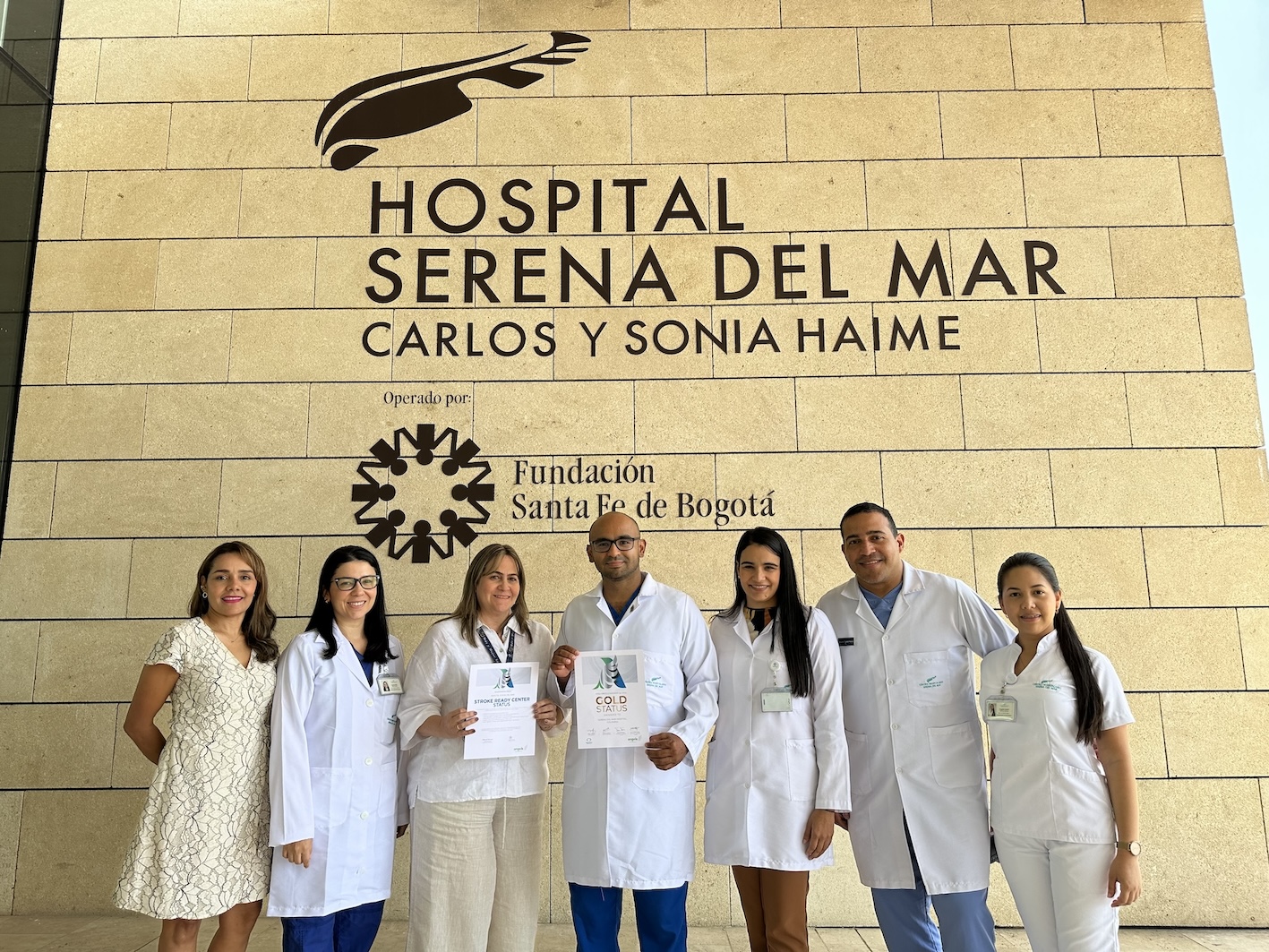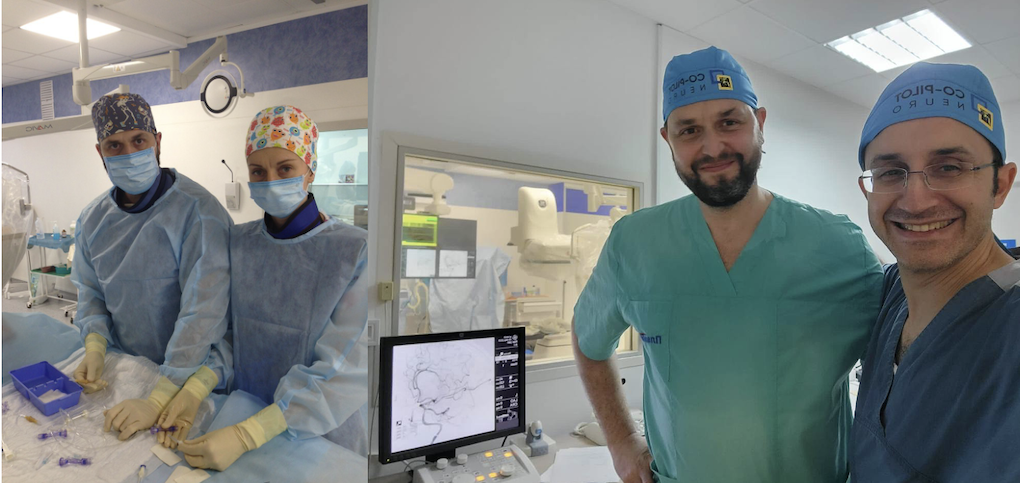
Снимките могат да дефинират война. Те могат да предизвикат емоция за секунда, да говорят за тези, които са заглушени от конфликт, и да отправят глобален призив да видят, повярват и действат.
От февруари 2022 г. най-документираната война в историята е създала безброй изображения на духове, от мъката на разединени семейства до нежните приюти на ранени бойци. Военните изображения на д-р Юрий Чередиченко обаче са различни от тези, които сте виждали преди. Те са от нитове и шахти, направени от контрастно багрило върху церебрална ангиограма. Те показват щетите, нанесени от наранявания при взрив в мината и травма при стрелба с пистолет, следата от опустошение, оставена от фрагменти от мината, и откъси от черупки, които са пробили черепа с хиляди метри в секунда.
Катастрофални сами по себе си, проникващите рани на главата и шията са свързани със съдови наранявания, които могат да причинят исхемичен инсулт, а много от военните изображения на д-р Cherednychenko са с радикални нови процедури за предотвратяване на вторичен инсулт. Близостта на болницата му до фронтовата линия, както на изток, така и на юг, го превръща в водещ експерт в света по бойни травми и инсулти за по-малко от две години.
Войници и цивилни са доведени при него директно от бойното поле и градовете под обстрел. Повечето са бойци на възраст между 20 и 50 години. Но сред изображенията, които наскоро сподели с хирурзи в Чикаго, имаше и 81-годишна жена с травма от взрив в мината и деветгодишно момче, ранено по време на артилерийски обстрел в дома си, което вече е претърпяло исхемичен инсулт, когато е закарано в Регионалната болница „Днипро“.
„Предотвратихме следващия инсулт“, казва д-р Cherednychenko. Младият му пациент се е възстановил добре, но е изправен пред несигурно бъдеще. Родителите му не са преживели атаката
.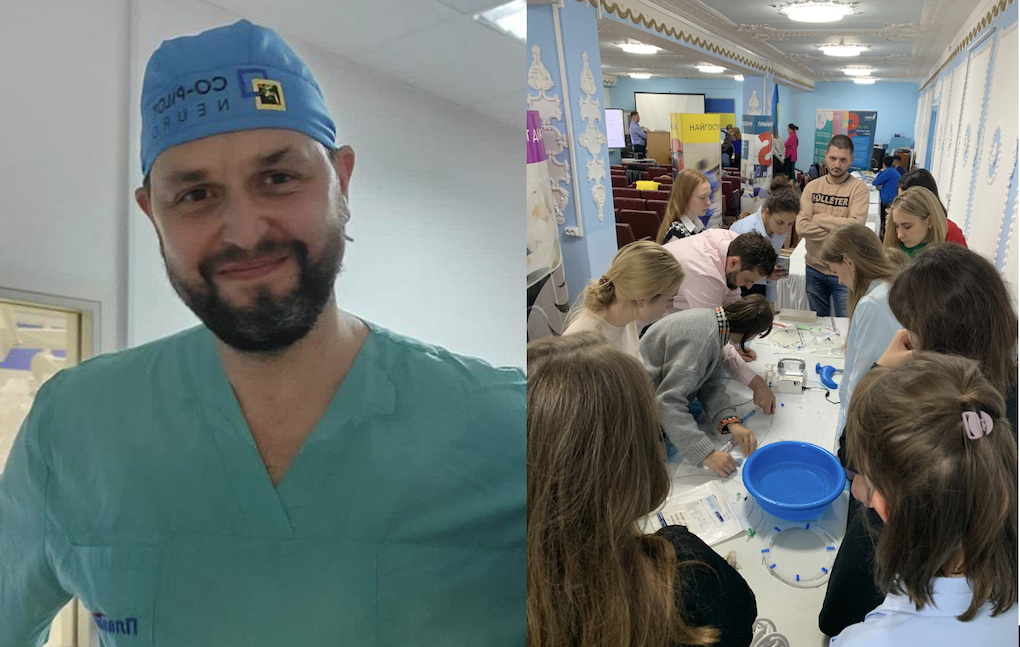
Учител по тромбектомия в Украйна
Юрий Чередниченко е човек на много първи места. Първата емболизация аневризма с отделящи се намотки в Украйна, първото навиване на мозъчна аневризма, първата имплантация на отклоняващ потока поток и т.н. И нататък. През 2016 г. той извърши първата механична тромбектомия в Украйна, давайки на местния футболен герой втори шанс за живот. През 2017 г. той е сред първите украински лекари, които работят с Инициатива Angels“, и в крайна сметка първият, който прилага списъците за проверка и препоръките на „Ангели“ по целия път на инсулта. Той остава ангажиран с „Ангели“ като говорител на събития и застъпник за въздействието, което „Ангели“ може да окаже върху качеството на грижите за пациенти с остър инсулт.
„Юрий винаги е бил в челните редици на грижите при инсулт“, казва д-р Дмитро Лебединец, който е ръководител на центъра за инсулти в болница „Феофания“ в Киев и служи заедно с д-р Чередниченко в борда на Украинското дружество по медицина на инсулта.
Той изтласква списък с постиженията на своя талантлив колега: „Скоростта му на тромбектомия е 18%, тромболизата в болницата му надвишава 20%, той лекува повече от 1000 пациенти годишно.“
Освен че е лично отговорен за една пета от всички механични тромбектомии, извършвани в страната, д-р Чередниченко е учителят по тромбектомия в Украйна. Той проектира първия образователен курс за интервенционални неврорадиолози в Украйна през 2019 г. и създаде свое собствено училище за ендоваскуларно лечение, чиито възпитаници д-р Лебединетс описва като „общност от обучени хора, които сега извършват тромбектомии в цяла Украйна“.
Той участва в разработването на национални насоки за инсулт и в неговия регион е организирал пътища от линейка до болница с изключителни резултати и наблюдава прилагането на скали за инсулт (RACE и неговия украински еквивалент MOZOK2), които могат да открият запушване на големи съдове в доболничната фаза.
И сега опитът му в борбата с мозъчна травма, смесената благословия на ужасната война, се търси от лекари извън Украйна, включително Франция, Израел и САЩ.
„Той е първият човек, който вижда пациенти, които са претърпели съдови наранявания във войната“, продължава д-р Лебединец. „Той е единственият, който ги лекува и е лекувал най-големия брой случаи на съдови наранявания на главата и шията в света.“
Това е мрачен крайъгълен камък, който свидетелства за човешките разходи на една брутална война, но все още не е пълната история. Разположен на 391 км югоизточно от украинската столица Киев, Dnipro се превърна в нов дом за много хора, бягащи от войната по-на изток. Непоносимият стрес, засягащ това бежанско население, е отчасти причината, поради която болницата на д-р Чередниченко наблюдава пик на цивилните инсулти. Той описва техния подход към реваскуларизацията с тромбектомия или тромболиза като агресивен: „Ние лекуваме всички пациенти, които можем.“
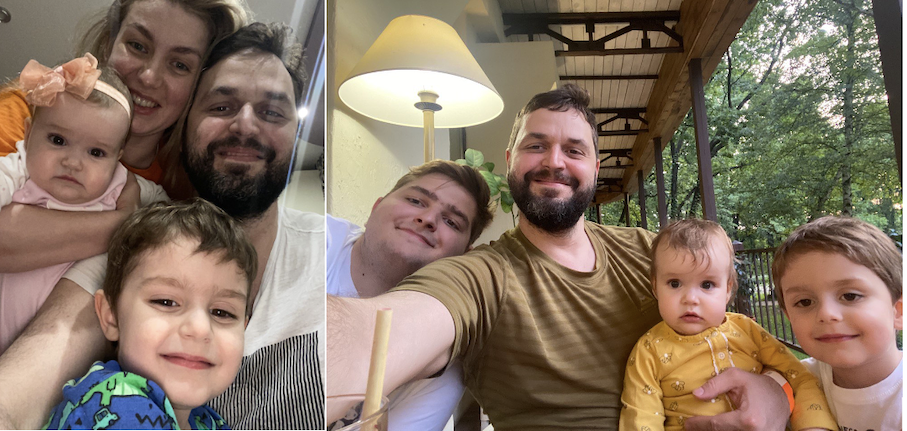
Странен факт
Тъй като говорим за стрес, има ли „лечение“ за износването и изхабяването на повече от 600 дни на фронтовата линия на бойната медицина? Да, има.
„Аз съм в Украйна със семейството си“, казва д-р Чередниченко. „Имам три деца и това ме подкрепя. За съжаление нямам достатъчно време за семейството си, но понякога е достатъчно да видя спящите си деца. Те се успокояват за мен.“
Но тъй като всичко във войната по някакъв начин е абсурдно и противоречиво, успокояващото зрение на спящи деца означава и страх за тяхната безопасност по време на ракетен удар. Той е извършвал операция, когато е настъпила последната атака и не е знаел, че са в безопасност, докато не приключи операцията.
Мечтата му от детството е да стане неврохирург, казва д-р Чередниченко. „Няма друг вид лекар. Като дете си мислех, че неврохирургът е специалист, който има достъп до всички тайни на мозъка и човешкото съзнание. След като пораснах малко, осъзнах, че това е детинска илюзия. Но вече се е случило някакво впечатление в тази професия. И наистина от този момент се разкриват много невероятни тайни.“
Задачата да се намерят нови начини за възстановяване на мозъка обаче е поглъщаща. „Харесва ми този занаят“, казва д-р Чередниченко. „Много е интересно и се развива много бързо, поддържа ме остър. И моята работа, честно казано, също е основното ми хоби. Абсолютно невероятно е да се чувстваш ангажиран в чудото на пациент, който се връща на този свят и на себе си.“
Има още едно несъответствие в историята на местен младеж, израснал в Днипро, където майка му е била учителка, а баща му е построил ракети и ракети. Същите ракети, които Русия сега вали върху Украйна, и нанасят жестоки фрагменти върху ангиограма.
„Това е странен факт“, наблюдава той тихо.
Последен парадокс присъства на нарастващата слава на д-р Чередниченко като боен неврохирург. В крайна сметка това е следствие от горчива война и неописуемо страдание. В същото време тя е преместила границите в областта на проникващата травма, разширявайки възможностите за отмяна на ужасната работа на войните.
В крайна сметка само глупак би си представил, че това е последната или единствената битка.
